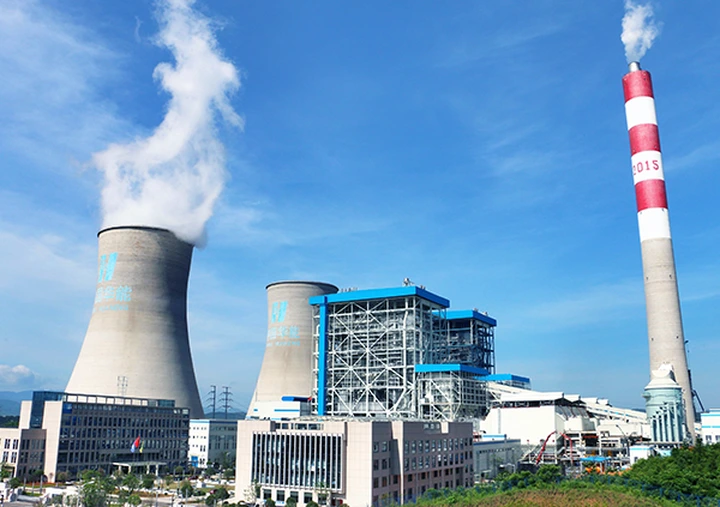
In today’s world, ensuring the safety of the water we consume and use daily is more important than ever. Homeowners are increasingly aware of the potential contaminants that can affect water quality, from heavy metals to harmful bacteria. To safeguard their health and that of their families, many are turning to innovative technologies designed to monitor and analyze water quality effectively. Among these solutions, water quality sensors play a crucial role in providing real-time data and insights.
BOQU Instrument has established a strong reputation in developing and producing high-quality water quality analyzers and sensors, focusing exclusively on products like water quality meters, dissolved oxygen meters, and pH sensors. With a commitment to precision and reliability, BOQU’s offerings empower homeowners to take proactive measures in keeping their water safe. This guide will delve into the various types of water quality sensors available, their benefits, and how you can utilize them to ensure the safety of your water supply at home.
Importance of Water Quality
Access to clean and safe water is essential for human health and well-being. Contaminated water can lead to a variety of health issues, including gastrointestinal illnesses, reproductive problems, and neurological disorders. Ensuring that water is free from harmful substances is a fundamental requirement for households, as it affects not only drinking water but also cooking and bathing.
Moreover, water quality impacts the environment and ecosystem health. Polluted water sources can harm aquatic life and disrupt the balance of natural habitats. When chemicals and toxins enter water systems, they can have cascading effects, affecting plant and animal life and ultimately impacting human communities that depend on these ecosystems for food and recreation.
Using water quality sensors is crucial for monitoring and ensuring the safety of the water supply. These devices provide real-time data on various parameters, such as pH levels, dissolved oxygen, and the presence of contaminants. By regularly assessing water quality, homeowners can make informed decisions and take proactive measures to protect their health and the environment.
Types of Water Quality Sensors
Water quality sensors come in various types, each designed to measure specific parameters crucial for assessing water safety and quality. One of the most common types is the pH sensor, which measures the acidity or alkalinity of water. pH levels can significantly affect aquatic life and the effectiveness of disinfection processes, making it essential for homeowners to monitor this parameter regularly.
Another important type of sensor is the dissolved oxygen meter. This device measures the amount of oxygen dissolved in water, which is vital for the survival of fish and other aquatic organisms. Low levels of dissolved oxygen can indicate pollution or other issues in water bodies. Homeowners interested in maintaining healthy ecosystems in ponds or aquariums should consider investing in a dissolved oxygen meter for accurate readings.
Conductivity sensors are also widely used to gauge water quality. They measure the electrical conductivity of water, which can provide insights into the concentration of dissolved salts and minerals. High conductivity levels may indicate contamination or high mineral content. Monitoring conductivity is important for homeowners who need to ensure that their water supply is safe and suitable for drinking or irrigation.
Features of BOQU Instruments
BOQU Instruments is renowned for its advanced technology in water quality sensors and analyzers. Their product range includes water quality meters, dissolved oxygen meters, pH sensors, and much more, all designed to provide accurate and reliable measurements. The focus on precision ensures that homeowners can monitor their water quality effectively, leading to safer and healthier living environments. To safeguard their health and that of their families, many are turning to advanced solutions like the BOQU Comprehensive Water Quality Analyzer which helps detect potential contaminants in their water supply.
One key feature of BOQU Instruments is their commitment to user-friendly designs. Many of their devices come equipped with intuitive interfaces, making it easier for homeowners to operate the equipment without specialized training. This accessibility is crucial for encouraging regular monitoring of water quality, thus enabling users to take necessary actions when issues arise.
Additionally, BOQU Instruments emphasizes durability and robustness in their products. The sensors and analyzers are built to withstand various environmental conditions, ensuring long-term reliability. This durability means homeowners can rely on their devices for consistent performance, making it a wise investment for anyone concerned about the safety of their water supply.
How to Choose the Right Sensor
When selecting a water quality sensor, it is essential to identify the specific parameters you need to measure. Different sensors are designed to monitor various aspects of water quality, such as dissolved oxygen, pH levels, turbidity, and more. Understanding your requirements will help narrow down your options and ensure that you choose a sensor that effectively meets your monitoring needs.
Next, consider the environment in which the sensor will be used. Some sensors are better suited for residential applications, while others might be designed for more challenging environments, such as industrial or agricultural settings. Factors like temperature range, pressure conditions, and potential exposure to chemicals or contaminants should be considered. Selecting a sensor that is durable and reliable in your specific environment is crucial for obtaining accurate readings.
Finally, evaluate the user-friendliness and maintenance requirements of the sensor. Many modern sensors come with digital interfaces that make data reading and interpretation easier. Additionally, consider how often the sensor will need calibration and maintenance. Opting for a sensor that is easy to install and maintain can save you time and ensure that your water quality monitoring is consistent and dependable.
Installation and Maintenance Tips
Proper installation of water quality sensors is crucial for accurate readings and functionality. Begin by selecting a suitable location that is free from disturbances such as direct sunlight, strong currents, or chemical exposure. Make sure to follow the manufacturer’s guidelines for installation procedures to ensure the sensor is securely mounted and calibrated correctly. It is recommended to check for any leaks or loose connections immediately after installation to prevent any future issues.
Regular maintenance is essential to keep your water quality sensors operating at their best. Clean the sensors periodically using a soft cloth or appropriate cleaning solution, as buildup can affect their accuracy. Additionally, verify the calibration of the sensors according to the manufacturer’s instructions, as this can shift over time due to environmental factors. Establishing a maintenance schedule will help ensure that your sensors provide reliable readings consistently.
Lastly, keep an eye on the performance of your sensors by monitoring the data they provide. If you notice any inconsistencies or unusual readings, it may signal a need for recalibration or replacement. Ensure that you also keep a record of any maintenance performed, as this documentation can help in identifying patterns and preventing future issues with your water quality monitoring system. Adhering to these tips will enhance the longevity and reliability of your water quality sensors.



